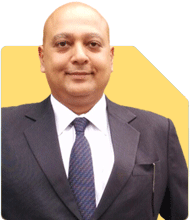Sushil Sukhwani |357 Answers |Ask -Follow
Study Abroad Expert - Answered on May 02, 2024

I am currently my final year of ece can i apply Msc in data science in germany after one year of work experience in india
First and foremost, thank you for getting in touch with us. I am happy to hear that you are currently pursuing the final year of Electronics and Communication Engineering (ECE). As an answer to your query, I would like to tell you that post acquiring one year of work experience in India, it is definitely possible to apply for an MSc in Data Science in Germany, particularly if your professional experience is pertinent to the field of data science or closely associated fields. I would like to let you know that hands-on experience in addition to academic credentials is frequently favored by universities in Germany. Nevertheless, I would recommend that you carefully look into the particular entry prerequisites of the universities and programs you intend enrolling in, in order to ascertain that you fulfill all criteria. Not just that, remember that based on the program and university, fluency in German might be necessary, and for the same, I would suggest that you take into account the language prerequisites. All in all, acquiring work experience can strengthen your application as well as offer useful insights for your data science coursework.
For more information, you can visit our website.
You may like to see similar questions and answers below
Sushil Sukhwani |357 Answers |Ask -Follow
Study Abroad Expert - Answered on Apr 18, 2023
Sushil Sukhwani |357 Answers |Ask -Follow
Study Abroad Expert - Answered on Sep 22, 2023
Sushil Sukhwani |357 Answers |Ask -Follow
Study Abroad Expert - Answered on Dec 23, 2023
Ramalingam Kalirajan |2446 Answers |Ask -Follow
Mutual Funds, Financial Planning Expert - Answered on May 17, 2024
Ramalingam Kalirajan |2446 Answers |Ask -Follow
Mutual Funds, Financial Planning Expert - Answered on May 17, 2024
Ramalingam Kalirajan |2446 Answers |Ask -Follow
Mutual Funds, Financial Planning Expert - Answered on May 17, 2024
Ramalingam Kalirajan |2446 Answers |Ask -Follow
Mutual Funds, Financial Planning Expert - Answered on May 17, 2024
Ramalingam Kalirajan |2446 Answers |Ask -Follow
Mutual Funds, Financial Planning Expert - Answered on May 17, 2024
Ramalingam Kalirajan |2446 Answers |Ask -Follow
Mutual Funds, Financial Planning Expert - Answered on May 17, 2024
Ramalingam Kalirajan |2446 Answers |Ask -Follow
Mutual Funds, Financial Planning Expert - Answered on May 17, 2024
Ramalingam Kalirajan |2446 Answers |Ask -Follow
Mutual Funds, Financial Planning Expert - Answered on May 17, 2024
Ramalingam Kalirajan |2446 Answers |Ask -Follow
Mutual Funds, Financial Planning Expert - Answered on May 17, 2024
Ramalingam Kalirajan |2446 Answers |Ask -Follow
Mutual Funds, Financial Planning Expert - Answered on May 17, 2024




















